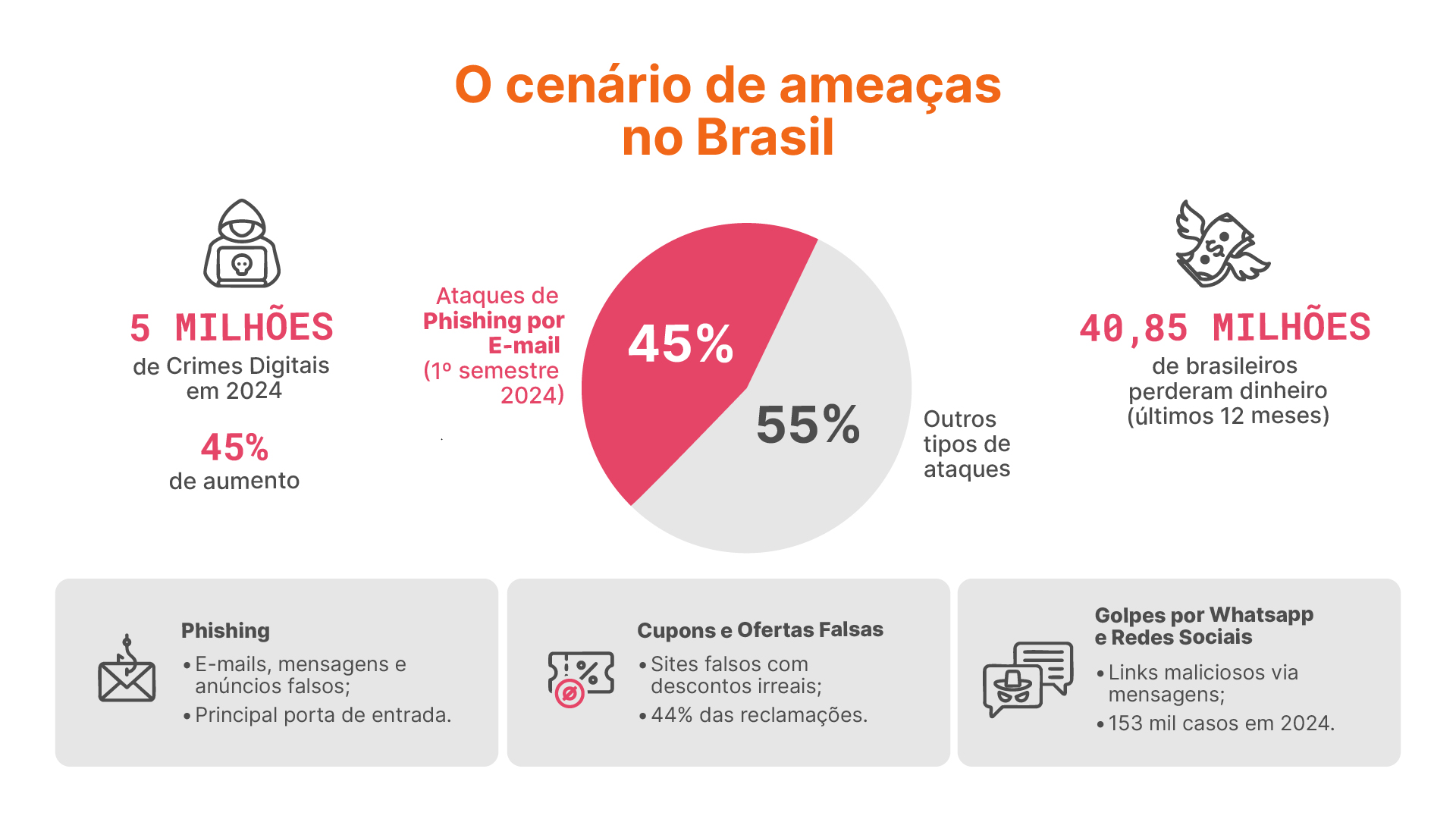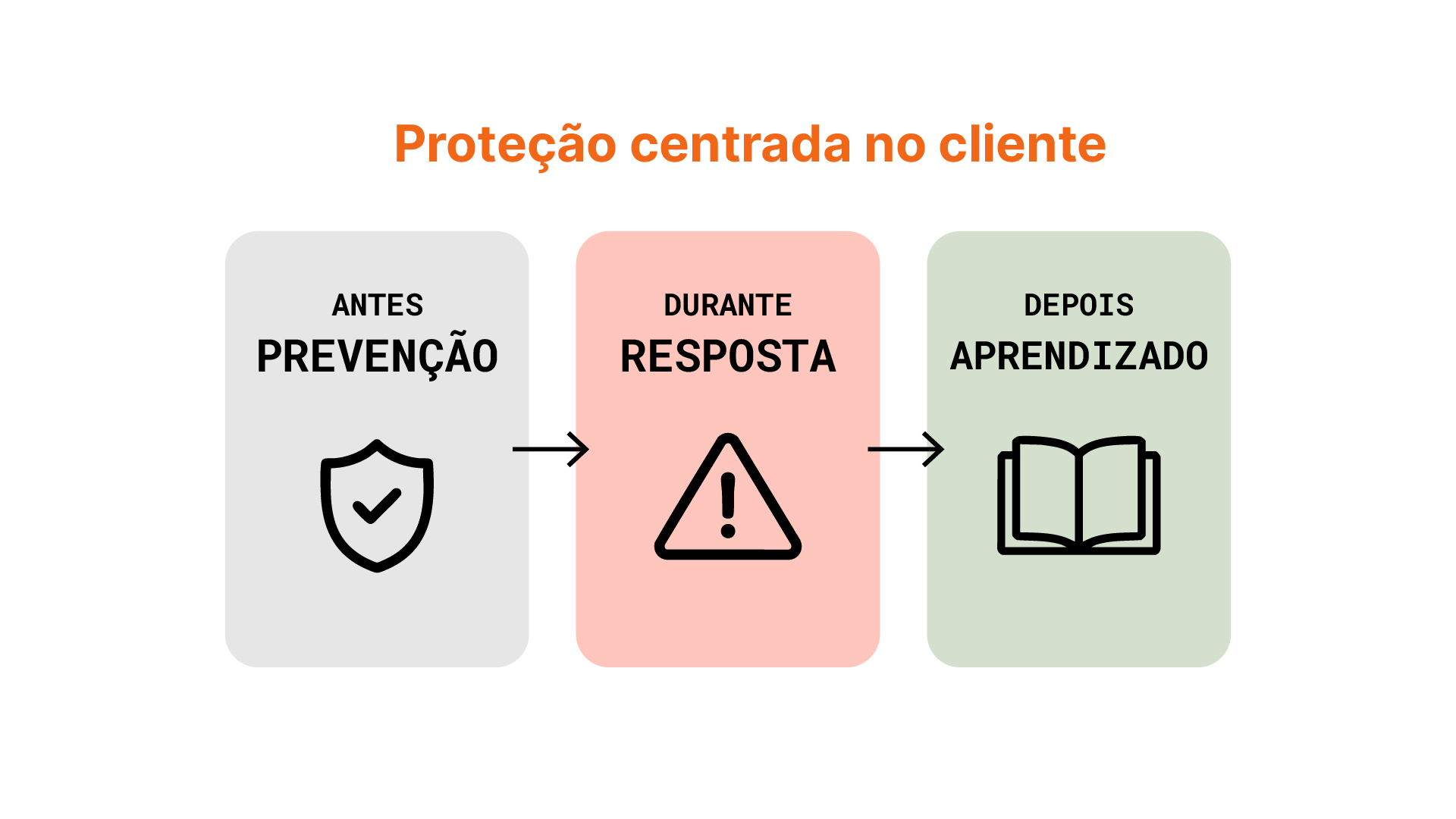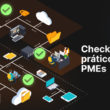September is traditionally known as Customer Month, a time when companies across all sectors intensify their relationship-building strategies, launch special promotions, and seek to strengthen ties with their customers. However, this same period of intense commercial activity also represents a period of greater vulnerability to digital scams.
With the significant increase in online transactions and the increased digital exposure of both businesses and consumers, protecting against cyber fraud has become a shared responsibility. In other words, it's not just about protecting data and internal systems, but also about educating and protecting customers, preserving the trust they've earned, and maintaining the reputation they've built over years of service.
The current digital threat landscape in Brazil is alarming. The number of digital crimes committed increased between 35% and 45% compared to the previous year, totaling approximately 5 million frauds committed in 2024. Even more worrying is the data released in September 2024: 24% of Brazilians had already been victims of digital scams , representing more than 40.85 million people who lost money due to cybercrime.
To better illustrate this worrying scenario, check out the following video. It clearly demonstrates how digital scams occur and what precautions businesses and consumers should take to avoid falling into these traps.

During promotional periods like Customer Month, three types of scams stand out and deserve special attention from both companies and consumers:
1. Phishing : the scam that imitates your brand
Phishing remains the main gateway for digital crime. Between September 2024 and February 2025, there was a 17.3% increase in the volume of phishing attacks carried out via email , which remains the main vector for these scams both in Brazil and worldwide.
Scammers exploit legitimate promotional campaigns to create convincing fake versions, deceiving consumers through emails, messages, and social media ads that perfectly mimic official company communications.
How your customers can protect themselves:
- Always check the official sender of promotional emails
- Be wary of “unmissable” offers with a very short deadline
- Never click on suspicious links – always go directly to the company’s official website
- Check if the website has a security certificate (https://)
- If in doubt, contact the company directly.

2. Fake coupons and offers: when the discount is too good
With the growth of e-commerce, fake websites offering impossible-to-resist discounts are proliferating. Studies indicate that approximately 32% of Brazilian consumers have experienced some kind of scam attempt involving fake websites , which impersonate major retailers to deceive customers with fraudulent offers. These scams become especially effective during seasonal promotions, when consumers are more likely to search for deals online.
Signs your customers should look out for:
- Discounts of over 70% on popular or newly launched products
- Sites with an amateur appearance or incomplete information
- Lack of clear information about exchange and return policy
- Payment methods that are limited or do not offer buyer protection
- Suspicious domains that do not match the official company name
3. Scams via WhatsApp and social media: the acquaintance trap
There were 153,000 cases of WhatsApp scams recorded in 2024 , making this the most common form of scam used by criminals. Furthermore, malicious links distributed via instant messaging have become an epidemic, especially during promotional periods when consumers expect to receive special communications from brands.
Guidelines for your customers:
- Check if the company actually sends promotions via WhatsApp
- Confirm through official channels before clicking on any link
- Be wary of messages with spelling errors or strange formatting.
- Never share personal data through unsolicited messages

How companies can protect their customers
Effective customer protection goes far beyond simply implementing internal security systems. Indeed, it requires a holistic approach that combines advanced technology, transparent communication, and ongoing education. Furthermore, companies truly committed to their customers' safety recognize that protection must be proactive, not reactive, and that each protected customer strengthens not only the individual relationship but also the entire foundation of trust within the brand.
As mentioned at the beginning of this article, in September 2024, it was revealed that 24% of Brazilians had already been victims of digital scams . In this scenario, companies have a moral and strategic responsibility to act as guardians of their customers' security. This means creating technological barriers, facilitating the identification of legitimate communications, and, most importantly, empowering consumers to become active participants in their own protection.
Transparent and educational communication
During Customer Month, it is essential that companies adopt a proactive stance in educating their consumers about digital security.
Communication strategies:
- Create educational campaigns on how to identify legitimate company communications
- Provide examples of official emails and messages on official channels
- Establish secure communication channels and inform customers about them
- Post alerts about attempted scams using the company's brand
Strengthening digital identity
Essential measures:
- Use consistent, official domains across all communications
- Implement security certificates on all company websites
- Maintain verified official profiles on social media
- Create a dedicated security page on the official website

Impacts of digital scams on companies and customers
Digital scams create a chain of consequences that deeply affect both direct victims and the companies whose brands are misused. Understanding the true extent of these impacts is crucial for organizations to develop effective protection and response strategies.
In this context, when we analyze the numbers— 5 million frauds committed in Brazil in 2024, as mentioned above—we're talking about millions of individual stories of loss, frustration, and loss of trust. For companies, each customer who becomes a victim of a scam using their brand represents not only immediate reputational damage but also a long-term risk to the entire consumer relationship ecosystem.

Furthermore, the costs of this vulnerability go far beyond the financial losses, creating cycles of distrust that can take years to reverse and requiring significant investments in rebuilding credibility.
For customers: beyond the financial loss
When a customer is the victim of a scam that uses a company's identity, the impacts go beyond financial loss:
- Loss of trust in the brand, even if it is not their fault
- Exposure of personal data that can be used in other scams
- Issues with card cancellation and password changes
- Time and energy spent resolving the situation
For companies: reputation at risk
Direct consequences:
- Association of the brand with fraudulent practices
- Significant increase in customer service due to communications queries
- Need for investment in awareness campaigns
- Possible impacts on sales during promotional periods
Hidden costs:
- Emergency implementation of security measures
- Constant monitoring of attempts to counterfeit the brand
- Legal resources to combat fake websites and profiles
- Crisis communication and reputation management
Customer-focused prevention strategies
Effective digital fraud prevention requires a paradigm shift: instead of focusing solely on protecting internal systems, companies need to invest in training and actively protecting their customers. This consumer-centric approach recognizes that the most vulnerable link in the digital security chain is often the end user themselves, not due to incompetence, but due to a lack of information and adequate tools.
Therefore, effective prevention strategies combine ongoing education, accessible technological tools, and streamlined processes that allow customers to easily verify the authenticity of communications they receive.
Continuing education: the best investment
Creating more conscious customers:
- Develop educational content about digital security on company channels
- Hold webinars or lives on how to protect yourself from online scams
- Create safety manuals specific to customer profiles
- Include safety tips in newsletters and regular communications
Making authenticity verification easier for the customer

One of the main challenges customers face is distinguishing legitimate communications from scam attempts. Responsible companies facilitate this process by creating simple and clear verification mechanisms.
Therefore, it's recommended to create a dedicated verification page. For example, include a specific section on the official website titled "How to verify if it's genuine" or "Security Center." Additionally, this page should include:
- Examples of official company communications
- List of official communication channels
- Step-by-step instructions to verify authenticity
- Gallery with examples of coup attempts already identified
At the same time, it's important to establish a direct channel for clarification. To do this, create a dedicated communication channel for security questions, which could be a phone number, online chat, or a specific form. Also, ensure this channel is widely publicized and offers quick responses.
Additionally, implement verification codes and unique elements in your official communications. This ensures these elements are difficult for fraudsters to replicate. Possibilities include:
- Unique verification codes in important emails
- Specific and registered graphic elements
- Consistent and unique communication patterns
- Digital signatures or visible certifications
In this context, it's important to invest in comparative visual education. To do this, develop visual materials that show, side by side, authentic versus fake communications, thus emphasizing the elements customers should look for to identify fraud attempts.
Technology at the service of protection
In this sense, companies committed to their customers' security are investing in advanced technological solutions. DNS filtering tools, for example, can automatically identify and block attempts to access malicious websites impersonating the company, offering an additional layer of protection.
Additionally, solutions like Lumiun DNS allow companies to monitor and block fraudulent domains that misuse their brands, protecting both their corporate reputation and customers who could be directed to these malicious sites.
Building a customer-centric protection strategy
To begin with, a solid customer protection strategy must be structured around three fundamental timelines: prevention, response, and continuous learning. In this sense, this systemic approach recognizes that digital protection is a dynamic process that requires advance preparation, rapid reaction when threats materialize, and constant evolution based on experience and new risk modalities.
With 153,000 WhatsApp scams reported in 2024 alone , it's clear that companies can no longer afford to be passive when it comes to their customers' security. Therefore, it's necessary to develop structured protocols that anticipate threats, respond effectively to crises, and, most importantly, transform each incident into a learning experience to strengthen the entire protection system.
This strategy must be built with a focus on customer experience, ensuring that security measures do not compromise usability but rather add perceived value to the relationship with the brand.

Before: prevention and education
Preparing the ground:
- Implement online brand monitoring systems
- Create clear protocols for identifying fraud attempts
- Partner with platforms to quickly remove fraudulent content
- Develop accessible and didactic educational materials
During: quick and transparent response
When the threat arises:
- Immediately alert customers through official channels
- Provide clear information on how to proceed
- Provide dedicated support for customers who may have been impacted
- Maintain transparent communication about the measures taken
After: learning and continuous improvement
Constantly evolving:
- Analyze attempted fraud cases to improve prevention
- Collect customer feedback on the effectiveness of protective measures
- Update educational materials based on new scam modalities
- Continuously invest in security technologies
The role of technology in customer protection
In this context, modern technology offers an arsenal of sophisticated tools to create multi-layered protective barriers. Furthermore, when implemented strategically, these solutions operate transparently to the end user, providing robust protection without compromising the customer experience.

Smart filtration: an invisible and effective barrier
In this sense, DNS filtering represents one of the most effective technologies for proactive customer protection. In effect, this solution acts as a digital gatekeeper, intercepting attempts to access malicious websites before they can cause damage.
When a user attempts to access a website, the DNS system is the first point of contact to translate the domain name into an IP address. Furthermore, intelligent filtering solutions take advantage of this time to verify the security of the destination, automatically blocking sites known for fraudulent activity.
Direct Benefits for the Customer
- Automatic phishing protection without the need to install software
- Blocking websites that imitate well-known brands
- Preventing malware downloads from compromised websites
- Real-time malicious content filtering
In this context, companies that adopt solutions like Lumiun DNS can offer an additional layer of protection to their customers. Furthermore, the system automatically identifies and blocks fraudulent domains that attempt to impersonate the brand, thus creating an effective barrier against scams that rely on redirecting users to malicious websites.
Proactive brand monitoring
In this sense, automated monitoring systems continuously scan the internet for misuse of corporate identity, thus enabling a rapid response to fraud attempts.
In terms of detection, advanced algorithms identify similar domain registrations, the creation of fake profiles on social networks, and phishing campaigns that use visual brand elements.
Additionally, artificial intelligence systems can identify suspicious patterns in online communications, thus detecting coordinated scam attempts even when they use sophisticated variations of the company's identity.
Finally, many platforms allow for automated actions when threats are detected, such as immediate notification of responsible teams, requesting removal of fraudulent content, and even automatic alerts to customers.
Preparing your customers for the digital future
The digital threat landscape is evolving exponentially, driven by emerging technologies such as artificial intelligence, the Internet of Things, and virtual reality. Truly protective companies don't just solve current problems, but actively prepare their customers to face the security challenges that lie ahead.
Furthermore, this future-proofing goes beyond simply informing about new threats. It involves developing clients' fundamental digital critical thinking skills, building communities of mutual support, and implementing technologies that automatically adapt to new types of risk.
With a 45% increase in digital crimes in just one year, it's clear that future threats will be even more sophisticated and frequent. Therefore, companies that invest today in preparing their customers for this digital future not only protect business relationships but also contribute to building a safer and more trustworthy digital ecosystem for society as a whole.
Scam Trends Your Customers Should Know About
Emerging threats:
- Deepfakes used in fake video calls
- Scams through virtual assistants and smart devices
- Exploitation of vulnerabilities in digital payment applications
- Targeted phishing based on data collected from social networks
Building a community of secure customers
Long-term strategies:
- Create groups or communities where customers can report scam attempts
- Establish reward programs for customers who identify fraud
- Develop security ambassadors among the most engaged customers
- Promote digital security culture as a brand value
Customer Month as an opportunity for protection
In this context, Customer Day and the entire month of September represent a unique opportunity for companies to demonstrate their true commitment to the well-being of their consumers. More than just offering quality products and services, responsible companies invest in the safety and education of their customers.
Furthermore, with approximately 50% of people who experience scam attempts actually becoming victims, digital protection is not just a technical responsibility, but a moral duty of companies to their customers. Those that successfully balance attractive promotions with digital security education gain not only sales but also lasting trust.
Finally, investing in protection technologies, such as smart DNS solutions , and ongoing customer education represents more than a security measure; it is an investment in the sustainability of customer relationships and sustainable business growth.









